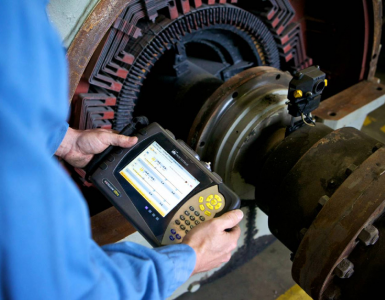The Bullwhip Effect is basically the idea that a small fluctuation in customer demand at the retail level gets magnified as we move “upstream”, or further up the supply chain.
This is usually not a big problem for small variations because forecasts can never be perfect. But the volatility could get magnified exponentially depending on where you stand in the value chain.
For example, consider a product which moves across four levels – manufacturing, wholesale, distribution, and retail. If all these levels had the same order and forecast policies over 12 months, a disruption of 20% in demand at the retail level could increase four-fold by the time the information reaches the manufacturer. The cascading effect would look something like this:
 Why does it happen?
Why does it happen?
The reason behind this is simply not knowing the actual demand, or what causes the disruptions. Manufacturers plan their inventory based on the orders they receive from their direct customers – rather than the end customer.
Without the right resources, it could be exhausting for managers to track the actual numbers – when they could just manage variability by ramping up their safety stock. In the early days of mass production, this could be minimized to an extent by having suppliers nearby so that they can respond quickly. Today, however, value chains are scattered all across the world – and just like most other industries, manufacturers are looking at leveraging their data for “taming the bull”.
How can IoT help?
In order to deal with this, we need to consider not just the external causes for variability, but also the internal operations which would put manufacturers in a position to be more prepared.
The great thing about IoT, and why it can be used to solve this problem, is that it is extremely flexible. No matter what the application, if relaying and analyzing data is the end goal, IoT probably has an answer. Let’s look some of the options:
Vendor Managed Inventory with RFID

Source: Logisticsmgepsupv
While the concept of Vendor Managed Inventory (VMI) has been around for several years, manufacturers now have the option to remotely monitor stock depletion through technologies like barcoding or RFID tags.
Even though early adopters like Walmart saw mixed results the early 2000s, the confidence in this technology has gone up significantly today.
According to a case study by Forbes, these technologies have the potential to reduce stock-outs by 50% in finished goods inventory, with Macy’s looking at monitoring 100% of their inventory in 2018 using a full-scale RFID implementation.
An added bonus is that the price of RFID tags has reduced significantly over the past decade, with a $1 chip in 2003 costing as low as 15 cents today!
Intelligent Monitoring with Sensors
Aside from tracking just the stock levels, companies have the option to take it to the next level through cloud-integrated sensors. In fact, it is quite likely that a manufacturer would be interested in measuring any parameters that would mitigate their risk.
For instance, food products need to be stored within a specific range of temperature and humidity. By minimizing the risk of spoilage, disruptions are less likely, reducing the occurrence of a bullwhip effect across the global value chain.
This is already being done on a large scale by vending machine companies like Cantaloupe Systems. With sensors already being used in manufacturing on the operational level, there is a lot of potential for relaying the impact of any variations through cloud-based ERP systems and vertical integration.
Warehouse Management with Automation
After having an intelligent, responsive system focused on mitigating external risk, the next logical step for organizations would be to maximize their own efficiency.
In 2013, a survey of 500 companies revealed that they expect an error rate of less than 0.5% in their warehousing operations, with companies like Amazon expecting nothing less than perfection. This is a challenge once a business scales up because repetitive processes like order fulfillment can cause worker fatigue, and not just increase picking errors but also the risk of accidents.
Amazon has been the frontrunner in dealing with this problem using automation. It uses over 45,000 industrial robots that are capable of lifting packages up to 317kg.
From the perspective of supply chain managers – an automated warehouse would eliminate a significant portion of the time/cost associated with order processing, with an instantaneous response once the order is received. It could maximize inventory turns while relaying any information on variability further upstream.
An interesting takeaway from all these applications is that they have been very successful individually. As a starting point, manufacturers can test the technologies which fit their operational goals, while building on their capabilities through small increments.
As the business scales up, they always have the option to put all the pieces together and construct a fully equipped IoT engine.







Gooԁ infoгmatіon. Lucky me I found your website by аccident (stumbleupon).
I have book-marked it for ⅼateг!